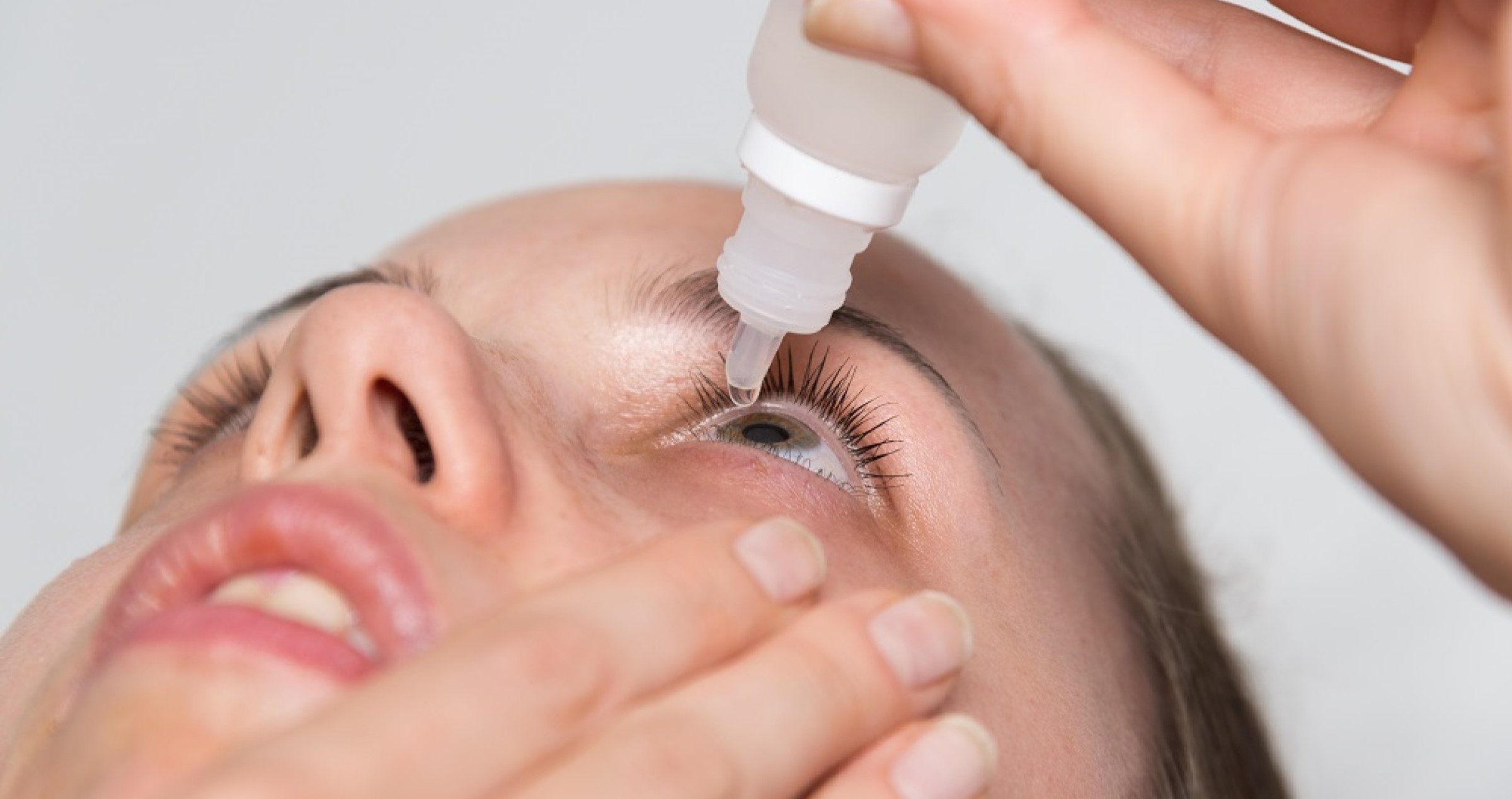Share
Glaucoma is one of the leading causes of irreversible blindness globally, with nearly 80 million people estimated to be affected in 2020. Out of these 80 million, at least 10 % of those were classified as legally blind.1, 2

The most common type of glaucoma is primary open angle glaucoma (POAG, where no identifiable cause for glaucoma is found), accounting for two thirds of all glaucoma cases. The second most common type is primary angle closure glaucoma, which is relatively more common in person of East Asian descent.6, 7 There are also numerous secondary causes of glaucoma. Most forms of glaucoma are associated with an elevated intraocular pressure (IOP) as the major risk factor and so current treatments are designed to work by reducing eye pressure. According to researchers, reducing IOP is the only treatment method that can stop or slow down the rate of vision loss due to glaucoma. Reducing eye pressure even in patients with normal pressure glaucoma (without high eye pressures) has been shown to slow progression.3-14
Once a diagnosis of glaucoma is made, a management plan that includes lifelong monitoring of the optic nerve (the site of glaucoma damage), vision, visual fields, eye pressures, and health is required to prevent vision loss.15
A variety of options are available to treat glaucoma which include prescription pressure lowering eye drops, laser procedures or surgery. Generally, topical eye drops are the first choice of initial glaucoma treatment.15,16
Topical medications are suitable for patients who are able to properly instil the eye drops themselves or who have someone to help them such as a family member or carer. As with any medications, topical pressure lowering drops may cause may have side effects, depending on the medication, in the eyes or systemically. These are discussed in detail by the eye care practitioner prior to commencement of treatment, together with strategies to minimise certain side effects. Your eye care provider will discuss these various risks and potential interactions with other health conditions and medications.
Using topical therapy is usually a life-long commitment for patients with glaucoma. Not adhering to therapy could result in irreversible vision loss. Understanding the disease process and how treatment helps are key factors for motivating patients to being organised and disciplined with the recommended treatment regime. Compliance is key to manage the successful treatment of glaucoma.17,18 The majority of patients with glaucoma can achieve good control of their eye pressures if the topical medication is administered correctly, regularly, and persistently. Low adherence to glaucoma treatments can lead to elevated or fluctuating eye pressures and consequently worsening of vision.17,19,20
A range of strategies to improve treatment adherence are outlined below.
Reminders
A few studies have investigated the effect of setting regular reminders to improve adherence to taking glaucoma medications. At least in the short term, strategies like timely, automatic reminders can assist in treatment adherence, compared to if patients did not have any assistance.23,24
Smart drop bottles
Technological developments have allowed for the design of a smart drop bottle device with smart phone connectivity. This bottle works by detecting when the bottle is squeezed via a sensor and then records when drops are administered to a mobile phone application via Bluetooth.25 The application also allows reminders to be set, and also serves as a monitoring mechanism.
Instillation aids
Eye drops require a specific technique for successful administration.26 Some patients with physical difficulties such as handgrip strength, dexterity issues, arthritis, tremor can find instilling eye drops challenging. To assist with successful eye drop administration several new instillation aids have been developed such as the Easidrop and Xal-Ease. A study has shown that more patients are able to successfully instil drops into their eyes.27
Communication and education
Studies have highlighted many barriers to successful adherence stem from patient education, communication and patient beliefs. It is thus paramount that patients are aware and appropriately educated on the disease process and risk for progressive and irreversible vision loss, and the benefits of current medical therapies. Simultaneously, such discussions should also address reasons for any patients’ issues with motivation and/or challenges relating to eye drop administration.29,21
Preservative- free drops
Medication side effects can become a major barrier to treatment, especially if these are not well communicated to the patient at the outset. Whilst most patients can tolerate pressure lowering eye drops well, some may experience minor to significant allergic responses to particular ingredients.15,31 Preservatives, particularly eye drops with benzalkonium chloride (BAK) may cause symptoms such as irritation, stinging and burning to the surface of the eye and lead to or increase dry eye disease.31-40
For patients who may have risk factors for developing ocular surface disease or dry eye, there may be preservative-free forms of glaucoma medications that may be more suitable for use.
Changing topical medication delivery mechanisms
Bottles vs single dose units (SDUs)
Some glaucoma drops are now available in single dose units and for some patients this is easier to instil. They are often also preservative free.
Gel forming eye drop
One pressure lowering medication is available as a gel-forming solution and preservative free eye drop. The gel allows for increased contact time with the eye reducing the dosing to less than other forms of timolol which are used twice per day.46 Once daily dosing has the advantage of reducing ocular irritation and potentially improving medication adherence.
Potential methods for the future
Long lasting eye drug formulas have the potential to provide stable eye pressure control by requiring less frequent administration. Strategies like implants to provide longer-lasting delivery systems and could thus potentially improve adherence and help avoid traditional topical administration in the future.
References
1. Jonas JB, Aung T, Bourne RR, Bron AM, Ritch R, Panda-Jonas S. Glaucoma. Lancet. 2017;390(10108):2183–2193. doi:10.1016/S0140-6736(17)31469-1
2. Quigley HA, Broman AT. The number of people with glaucoma worldwide in 2010 and 2020. Br J Ophthalmol. 2006;90(3):262–267. doi:10.1136/bjo.2005.081224
3. Collaborative Normal-Tension Glaucoma Study Group. The effectiveness of intraocular pressure reduction in the treatment of normal-tension glaucoma. Am J Ophthalmol. 1998;126(4):498–505. doi:10.1016/s0002-9394(98)00272-4
4. The Advanced Glaucoma Intervention Study (AGIS): 7. The relationship between control of intraocular pressure and visual field deterioration. The AGIS investigators. Am J Ophthalmol. 2000;130(4):429–440. doi:10.1016/s0002-9394(00)00538-9
5. Anderson DR, Drance SM, Schulzer M; Collaborative Normal-Tension Glaucoma Study G. Natural history of normal-tension glaucoma. Ophthalmology. 2001;108(2):247–253. doi:10.1016/s0161-6420(00)00518-2
6. Chauhan BC, Mikelberg FS, Artes PH, et al. Canadian Glaucoma Study: 3. Impact of risk factors and intraocular pressure reduction on the rates of visual field change. Arch Ophthalmol. 2010;128(10):1249–1255. doi:10.1001/archophthalmol.2010.196
7. Chauhan BC, Mikelberg FS, Balaszi AG, et al. Canadian Glaucoma Study: 2. risk factors for the progression of open-angle glaucoma. Arch Ophthalmol. 2008;126(8):1030–1036. doi:10.1001/archopht.126.8.1030
8. Drance S, Anderson DR, Schulzer M; Collaborative Normal-Tension Glaucoma Study G. Risk factors for progression of visual field abnormalities in normal-tension glaucoma. Am J Ophthalmol. 2001;131(6):699–708. doi:10.1016/s0002-9394(01)00964-3
9. Garway-Heath DF, Crabb DP, Bunce C, et al. Latanoprost for open-angle glaucoma (UKGTS): a randomised, multicentre, placebo-controlled trial. Lancet. 2015;385(9975):1295–1304. doi:10.1016/S0140-6736(14)62111-5
10. Heijl A, Leske MC, Bengtsson B, et al. Reduction of intraocular pressure and glaucoma progression: results from the early manifest glaucoma trial. Arch Ophthalmol. 2002;120(10):1268–1279. doi:10.1001/archopht.120.10.1268
11. Kass MA, Heuer DK, Higginbotham EJ, et al. The Ocular Hypertension Treatment Study: a randomized trial determines that topical ocular hypotensive medication delays or prevents the onset of primary open-angle glaucoma. Arch Ophthalmol. 2002;120(6):701–713. discussion 829–30. doi:10.1001/archopht.120.6.701
12. Leske MC, Heijl A, Hussein M, et al. Factors for glaucoma progression and the effect of treatment: the early manifest glaucoma trial. Arch Ophthalmol. 2003;121(1):48–56. doi:10.1001/archopht.121.1.48
13. Lichter PR, Musch DC, Gillespie BW, et al. Interim clinical outcomes in the Collaborative Initial Glaucoma Treatment Study comparing initial treatment randomized to medications or surgery. Ophthalmology. 2001;108(11):1943–1953. doi:10.1016/s0161-6420(01)00873-9
14. Nouri-Mahdavi K, Hoffman D, Coleman AL, et al. Predictive factors for glaucomatous visual field progression in the Advanced Glaucoma Intervention Study. Ophthalmology. 2004;111(9):1627–1635. doi:10.1016/j.ophtha.2004.02.017
15. Broadway DC, Cate H. Pharmacotherapy and adherence issues in treating elderly patients with glaucoma. Drugs Aging. 2015;32(7):569–581. doi:10.1007/s40266-015-0282-9
16. Gazzard G, Konstantakopoulou E, Garway-Heath D, et al. Selective laser trabeculoplasty versus eye drops for first-line treatment of ocular hypertension and glaucoma (LiGHT): a multicentre randomised controlled trial. Lancet. 2019;393(10180):1505–1516. doi:10.1016/S0140-6736(18)32213-X
17. Sleath B, Blalock S, Covert D, et al. The relationship between glaucoma medication adherence, eye drop technique, and visual field defect severity. Ophthalmology. 2011;118(12):2398–2402. doi:10.1016/j.ophtha.2011.05.013
18. Yeaw J, Benner JS, Walt JG, Sian S, Smith DB. Comparing adherence and persistence across 6 chronic medication classes. J Manag Care Pharm. 2009;15(9):728–740. doi:10.18553/jmcp.2009.15.9.728
19. Weinreb RN. Compliance with medical treatment of glaucoma. J Glaucoma. 1992;1(2):134–136. doi:10.1097/00061198-199201020-00012
20. Zimmerman TJ, Zalta AH. Facilitating patient compliance in glaucoma therapy. Surv Ophthalmol. 1983;28:252–258. doi:10.1016/0039-6257(83)90142-x
21. Lacey J, Cate H, Broadway DC. Barriers to adherence with glaucoma medications: a Qualitative Research Study. Eye. 2009;23(4):924–932.
22. Patel SC, Spaeth GL. Compliance in patients prescribed eyedrops for glaucoma. Ophthalmic Surg. 1995;26(3):233–236.
23. Okeke CO, Quigley HA, Jampel HD, et al. Interventions improve poor adherence with once daily glaucoma medications in electronically monitored patients. Ophthalmology. 2009;116(12):2286–2293. doi:10.1016/j.ophtha.2009.05.026
24. Lai Y, Wu Y, Chai C, et al. The effect of patient education and telemedicine reminders on adherence to eye drops for glaucoma. Ophthalmol Glaucoma. 2020;3(5):369–376. doi:10.1016/j.ogla.2020.05.005
25. Aguilar-Rivera M, Erudaitius DT, Wu VM, et al. Smart electronic eyedrop bottle for unobtrusive monitoring of glaucoma medication adherence. Sensors (Basel). 2020;20(9):2570. doi:10.3390/s20092570
26. Davies I, Williams AM, Muir KW. Aids for eye drop administration. Surv Ophthalmol. 2017;62(3):332–345. doi:10.1016/j.survophthal.2016.12.009
27. Winfield AJ, Jessiman D, Williams A, Esakowitz L. A study of the causes of non-compliance by patients prescribed eyedrops. Br J Ophthalmol. 1990;74(8):477–480. doi:10.1136/bjo.74.8.477
28. Nordmann JP, Baudouin C, Bron A, et al. Xal-Ease: impact of an ocular hypotensive delivery device on ease of eyedrop administration, patient compliance, and satisfaction. Eur J Ophthalmol. 2009;19(6):949–956. doi:10.1177/112067210901900609
29. Friedman DS, Hahn SR, Gelb L, et al. Doctor-patient communication, health-related beliefs, and adherence in glaucoma results from the Glaucoma Adherence and Persistency Study. Ophthalmology. 2008;115(8):1320–7, 1327.e1–3. doi:10.1016/j.ophtha.2007.11.023
30. Sheppard J, Warner J, Kelley K. An evaluation of the effectiveness of a nurse-led glaucoma monitoring clinic. Ophthalmic Nurs. 2003;7:15–21.
31. Servat JJ, Bernardino CR. Effects of common topical antiglaucoma medications on the ocular surface, eyelids and periorbital tissue. Drugs Aging. 2011;28(4):267–282. doi:10.2165/11588830-000000000-00000
32. Dogan AS, Orhan M, Soylemezoglu F, Irkec M, Bozkurt B. Effects of topical antiglaucoma drugs on apoptosis rates of conjunctival epithelial cells in glaucoma patients. Clin Exp Ophthalmol. 2004;32(1):62–66. doi:10.1046/j.1442-9071.2003.00760.x
33. Furrer P, Mayer JM, Plazonnet B, Gurny R. Ocular tolerance of absorption enhancers in ophthalmic preparations. AAPS PharmSci. 2002;4(1):E2. doi:10.1208/ps040102
34. Ishibashi T, Yokoi N, Kinoshita S. Comparison of the short-term effects on the human corneal surface of topical timolol maleate with and without benzalkonium chloride. J Glaucoma. 2003;12(6):486–490. doi:10.1097/00061198-200312000-00008
35. Manni G, Centofanti M, Oddone F, Parravano M, Bucci MG. Interleukin-1beta tear concentration in glaucomatous and ocular hypertensive patients treated with preservative-free nonselective beta-blockers. Am J Ophthalmol. 2005;139(1):72–77. doi:10.1016/j.ajo.2004.08.028
36. Nenciu A, Stefan C, Ardelean C. [Structural and immunohistochemical changes of conjunctiva induced by topical glaucoma medication]. Oftalmologia. 2004;48(1):35–42. Tratamentul topic antiglaucomatos–modificarile conjunctivale structurale si imunohitochimice. Portuguese.
37. Pisella PJ, Debbasch C, Hamard P, et al. Conjunctival proinflammatory and proapoptotic effects of latanoprost and preserved and unpreserved timolol: an ex vivo and in vitro study. Invest Ophthalmol Vis Sci. 2004;45(5):1360–1368. doi:10.1167/iovs.03-1067
38. Pisella PJ, Pouliquen P, Baudouin C. Prevalence of ocular symptoms and signs with preserved and preservative free glaucoma medication. Br J Ophthalmol. 2002;86(4):418–423. doi:10.1136/bjo.86.4.418
39. Martone G, Frezzotti P, Tosi GM, et al. An in vivo confocal microscopy analysis of effects of topical antiglaucoma therapy with preservative on corneal innervation and morphology. Am J Ophthalmol. 2009;147(4):725–735.e1. doi:10.1016/j.ajo.2008.10.019
40. Iester M, Oddone F, Fogagnolo P, Frezzotti P, Figus M. Changes in the morphological and functional patterns of the ocular surface in patients treated with prostaglandin analogues after the use of TSP 0.5%® preservative-free eyedrops: a Prospective, Multicenter Study. Ophthalmic Res. 2014;51(3):146–152. doi:10.1159/000357100
41. Asiedu K, Abu SL. The impact of topical intraocular pressure lowering medications on the ocular surface of glaucoma patients: a review. J Curr Ophthalmol. 2019;31(1):8–15. doi:10.1016/j.joco.2018.07.003
42. Jaenen N, Baudouin C, Pouliquen P, Manni G, Figueiredo A, Zeyen T. Ocular symptoms and signs with preserved and preservative-free glaucoma medications. Eur J Ophthalmol. 2007;17(3):341–349. doi:10.1177/112067210701700311
43. Nordmann JP, Auzanneau N, Ricard S, Berdeaux G. Vision related quality of life and topical glaucoma treatment side effects. Health Qual Life Outcomes. 2003;1(1):75. doi:10.1186/1477-7525-1-75
44. Hommer A, Mohammed Ramez O, Burchert M, Kimmich F. IOP-lowering efficacy and tolerability of preservative-free tafluprost 0.0015% among patients with ocular hypertension or glaucoma. Curr Med Res Opin. 2010;26(8):1905–1913. doi:10.1185/03007995.2010.492030
45. Parkkari M, Latvala T, Ropo A. Handling test of eye drop dispenser–comparison of unit-dose pipettes with conventional eye drop bottles. J Ocul Pharmacol Ther. 2010;26(3):273–276. doi:10.1089/jop.2009.0111
46. Lazreg S, Merad Z, Nouri M, et al. Efficacy and safety of preservative-free timolol 0.1% gel in open-angle glaucoma and ocular hypertension in treatment-naïve patients and patients intolerant to other hypotensive medications. J Fr Ophtalmol. 2018;41(10):945–954. doi:10.1016/j.jfo.2018.04.012
47. Negri L, Ferreras A, Iester M. Timolol 0.1% in glaucomatous patients: efficacy, tolerance, and quality of life. J Ophthalmol. 2019;2019:4146124. doi:10.1155/2019/4146124
48. Shirley M. Bimatoprost implant: first approval. Drugs Aging. 2020;37(6):457–462. doi:10.1007/s40266-020-00769-8
Original press release can be found here.


